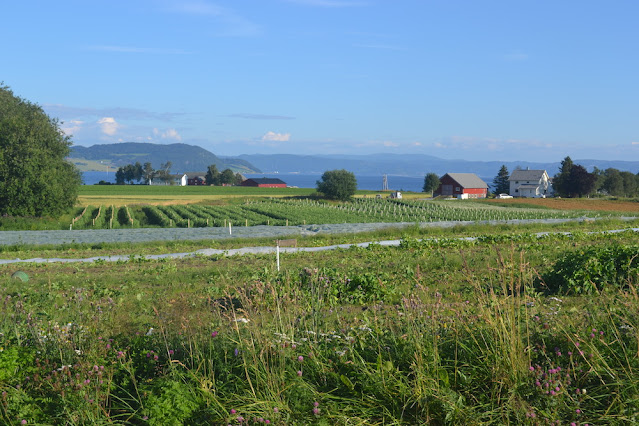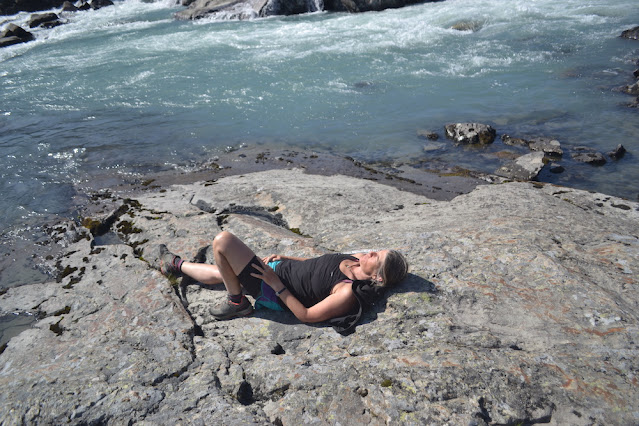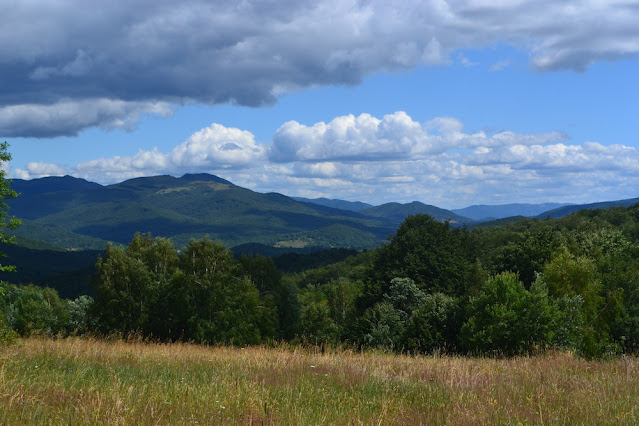BIKING ADVENTURE IN NORWAY!
| After our work in Rzeszow, we took a train to Krakow and visited the Auschwitz/Burkanau where over one million people, mostly Jews, were murdered in gas chambers between 1941 and 1945, as the world looked the other way. We spent the entire day there, in the cold rain. The beginning of the 2nd world war was a coordinated attack on Poland by Germany from the West and the Soviet Union from the East, preceded by regular joint meetings of the SS and the NKVD (the predecessor of KGB). |
It was time to head back to Helsinki to retrieve our bicycles. We traveled via Tallin, Estonia, (a favorite memorable place for Misha from childhood) an ancient city-fortress which was preparing to celebrate the 31st anniversary of Liberation from the second Soviet occupation, from 1944 to 1991.
A glimpse of Estonia’s beautiful Old Town
After spending a day in Tallin, we took a ferry across the Gulf of Finland to Helsinki, assembled our bikes in Vantaa and biked 40 kilometers through the countryside, following an impressive bike path infrastructure, back to the port where we rolled on to TallinSilja Ferry and sailed overnight to Stockholm. Thousands of Russians enter Europe through Estonia and Finland. The EU is in the midst of discussing a ban on Russian tourists, while Finland has limited the number of tourist visa’s it issues to Russians. The issue is very complicated as it is hard to distinguish between Russian dissidents, fleeing the regime and those leaving because of economic hardships caused by sanctions or Russian tourists wanting to vacation in Europe. Finland lost 9% of its territory during Russian aggression in 1939. They are definitely concerned for many reasons about this war.
Stockholm is a beautiful city surrounded by water. We biked all day crossing many bridges to the many different islands. We visited the Astrid Lindgren Museum and searched for Carlson on the Roof!
Lynne with Astrid Lindgren in the gardens
We planned a three-leg expedition with train /bus and boat transport between legs following bike routes we’d researched prior to the start of the war in Ukraine.
https://pilegrimsleden.no/en/
https://www.valdres.com/
https://www.visitnorway.com/
Notice Misha using an ipad!
Our trip began with an overnight train from Stockholm to Duved, Sweden! Most of Europe is incredibly bike friendly and you can bring your bikes on all modes of transportation (although sometimes you need to negotiate and plead with bus drivers)!
One of many Norway Trains, this one was traveling at at speed of 265 kilometers per hour!
Welcome to Norway!
It was an amazing expedition! The scenery is spectacular and the terrain is perfect for mountain biking. The summer days are still super long in August (Day light from 4AM to 11 PM). The weather was beautiful with gray stormy days balanced by mountain blue skies. Lush conifer and moss forests at lower elevations (with lots of mushrooms) give way to dwarf birch as you climb and then to tundra with its multitude of colors, thousands of crystal-clear lakes and streams, patches of snow and an amazing amount of wild blueberries!
Higher up, glaciers and craggy peaks are easily accessible by foot. In Scandinavia, with its ”Freedom to Roam Law,” you are allowed, for the most part, to camp virtually anywhere. Each of our camps was picture-perfect by a lake or stream with bountiful blueberry and mushroom harvests. Cultural aspects add to the richness of the experience. Passing through quaint villages with authentic architecture, ancient churches, vibrant agriculture, meeting other cyclists and hikers along the way, eating quality food, which is easily available and mostly grown in Norway and connecting with local people. All of this blending of nature and culture made traveling in Norway a very special experience for us.
Along the trail, we came upon Falstad Concentration Camp Memorial. While operating at a different scale, Falstad, was a gathering point for Norwegian Jews who were deported from Norway to Aushwitz, as well as a prison labor camp for Norwegian resistance fighters and prisoners of war. Falstad has an impressive contemplative exhibit, called Houses of Darkness, which attempts to understand how ordinary people are capable of committing terrible crimes.
The availability and accessibility of high-quality public transportation makes it easy and super interesting to hop between destinations. We took five boats, ranging from a small motor boat to a huge cruise ship, six trains (all trains are electric) and two busses! We experienced Helsinki, Stockholm, Trondheim and Oslo.
All are vibrant, clean and beautiful cities. In Oslo, we went to a public sauna floating on a dock in the harbor right in the city center. The water in the harbor is clean enough to jump into right off the dock, amidst thousands of tourists passing by!
By far, the highlight of our Oslo visit was the Nobel Peace Center, where we spent the entire day, basking in the legacy of wonderful people who gave of themselves to humanity and the planet. There is a direct correlation between freedom of the press and the strength of the democracy. The museum had a new exhibit on Democracy and the suppression of the press in Russia (and other countries as well). Russia ranks #155 in freedom of the press out of 180 countries. In comparison, the US # 42 and Norway #1 https://rsf.org/en/index
Traveling in Scandinavia gave us new appreciation and understanding for the role the United States plays in standing up against dictatorships of the world. There is a wide-spread appreciation for the US and acknowledgement that we are the only country that has what it takes to hold back Russia and China. We came to the realization that it is much easier to uphold functional democracies in small, homogeneous European countries as compared to our very large and diverse country. We gained a new perspective, recognizing that while the American democracy is very imperfect, we are immensely fortunate to have basic checks and balances, such as a somewhat representative government, term limits, state autonomy and freedom of expression.
We must stay awake to Russian aggression in Ukraine and bring an end to Putin. A 70-year-old Swedish bus driver, who talked to us non-stop for five hours in the wee hours of the morning, compared Putin to a fox. “When we go fox hunting” he said, “we always leave an escape door for the fox, so he can get away with dignity. Putin has no escape door, as no respectable world leader will ever shake his hand again, so he will fight to death. Thus we have no choice, we have to kill him!”
Our Democracy is very young, yet it is the oldest democracy on the planet. It is an experiment we need to defend, and continue to ask for ongoing growth and striving. If we don’t, the possibility of another Auschwitz is very real.
Everywhere that humans exist there is work to be done. There is no perfect place, and we can all learn from each other, if we are willing to listen.
The rivers are amazing and so powerful where we traveled in Norway
The beauty of nature and culture is out there to be found! We have seen an amazing way of staying connected to the natural world and it’s gifts of feeding the human soul (visiting and spending time in nature, we were told, is mandatory in Norwegian education) and using technology and forward thinking to help the Earth and all the people. There is work to be done and every little bit helps! We think it is really important to see the world and what is happening in other places, even within our own country, to gain perspective and see new light! We wish you all happy travels!
A few random takeaways from our small window into Norway
- 80% of the cars sold in Norway today are electric. By 2025, Norway will stop the sale of passenger gas and deisel vehicles. There are large EV charging stations everywhere, while gas stations are empty.
- There are bike paths and bike lanes in the cities, towns, villages and connecting to eachother. We experienced very little road congestion and air pollution.
- We have not seen a single vinyl sided house in Norway and a very few asphalt roofs. All siding is wood, most house roofs we saw were either planks, clay tiles, living sod or scalloped slate. All products that can go back to the earth.




































Comments
Post a Comment